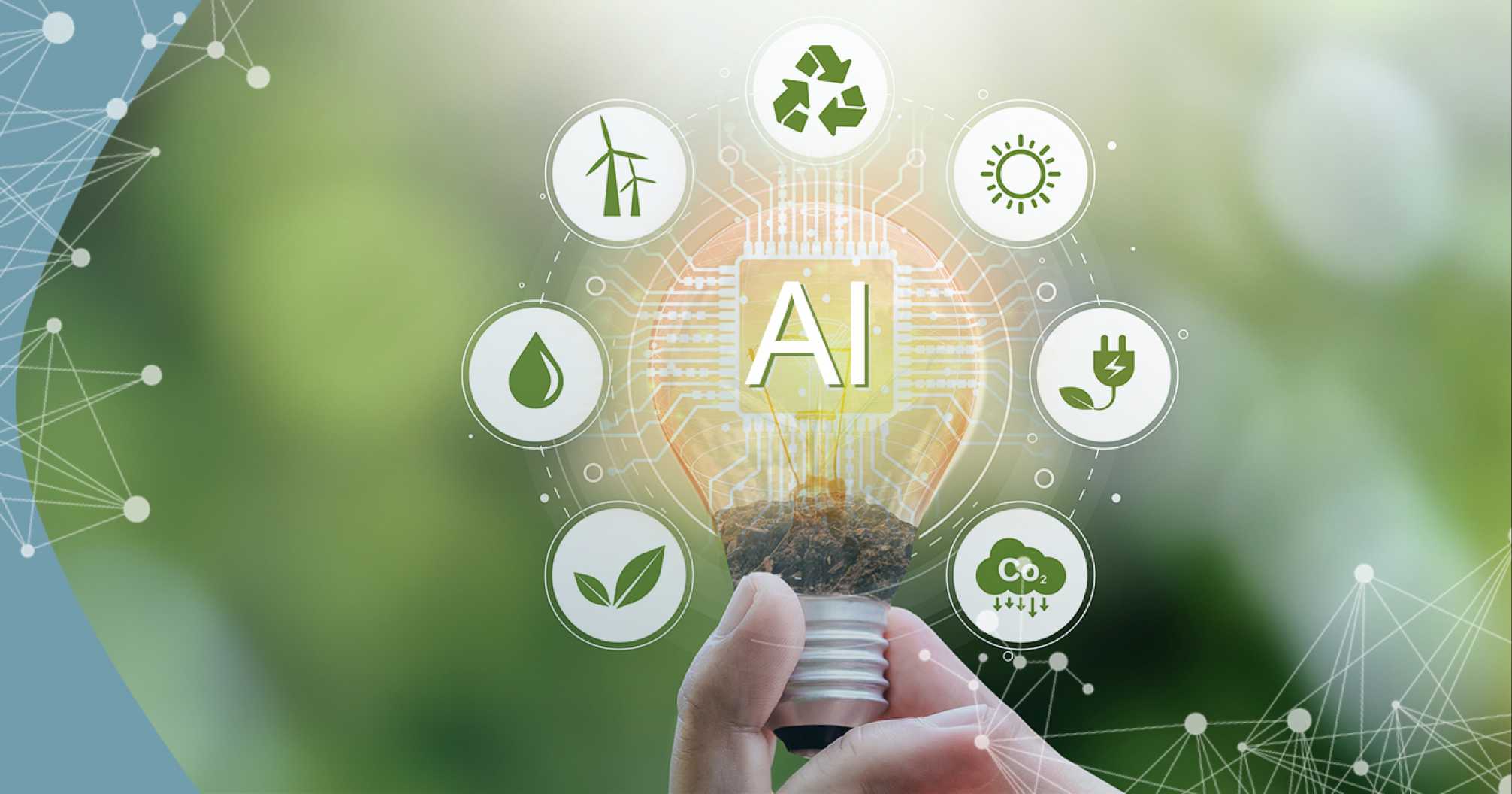We build digital products to help businesses succeed!
Introduction
Embarking on a journey to safeguard our planet, AI environmental protection stands at the forefront of innovation, offering a beacon of hope in the fight against climate change. As we grapple with escalating environmental challenges, AI climate change emerges as a pivotal ally, offering innovative solutions that transcend traditional methods. A recent McKinsey report highlights the transformative potential of generative AI, underscoring its capacity to revolutionize industries and foster a sustainable future.
According to a Deloitte study, 92% of organizations with advanced AI implementations report improved environmental sustainability outcomes. This underscores AI’s pivotal role in driving eco-friendly initiatives. As we delve into the success stories and breakthrough solutions AI has furnished, we find ourselves inspired by its profound impact on environmental science. From optimizing resource consumption to predicting ecological shifts, AI is not merely an ally; it is a catalyst for a greener future. This blog will illuminate the myriad ways AI has become an indispensable asset in our environmental arsenal, charting a course towards a more resilient and sustainable world.
AI in Environmental Engineering: 6 Smart Solutions for a Greener World
In the realm of AI environmental protection, environmental engineering stands as a testament to the innovative use of technology to foster AI sustainability. Here are six smart solutions where AI intersects with environmental engineering, offering a beacon of hope in the battle against climate change.
1. Eco-friendly Urban Planning:
By optimizing traffic flow, energy consumption, and waste management, AI contributes to creating sustainable urban ecosystems. Researchers at Stanford’s Human-Centered Artificial Intelligence institute examined AI approaches that could help address the needs of a planet on life support. They developed prototype projects for new climate solutions, land management practices, water security, environmental justice, and more
2. Water Resource Management:
Intelligent systems predict water demand and supply patterns, detect leaks, and ensure efficient water usage, significantly reducing wastage and preserving this precious resource. In India, AI has been leveraged to assist smallholder farmers with water management. The AI model can learn from a broad set of relevant data and images to help farmers make smarter decisions, such as the right quantity of pesticide to spray at what stage of a pest infestation, ultimately leading to a reduction in water usage
3. Renewable Energy Optimization:
Harnessing the power of AI, engineers can predict renewable energy outputs from solar and wind sources. The National Renewable Energy Laboratory (NREL) developed an AI-based wind plant optimization algorithm, which adjusts the yaw angle of individual turbines to maximize power output. This enhances the performance and efficiency of renewable energy systems
4. Waste Reduction Systems:
By identifying and categorizing waste materials, AI systems improve recycling rates and help reduce landfill usage. Winnow Solutions, a London-based startup, uses AI to help reduce food waste. Their system uses machine learning algorithms to identify the weight and type of food thrown away, helping to create a more accurate inventory and reduce daily food waste
5. Biodiversity Conservation:
AI tools in environmental science are crucial for monitoring and protecting biodiversity. They track wildlife movements, assess habitat health, and predict potential threats. In the Serengeti National Park, Tanzania, AI has been used to track and protect the park’s wildlife. A network of camera traps equipped with AI software allows researchers to monitor the movements of various species, aiding in conservation efforts
6. Climate Resilience Infrastructure:
AI Climate Change assesses risks and designs infrastructure resilient to climate change effects, including flood defenses and building structures capable of withstanding extreme weather events. AI technologies like IoT, BIM, digital twins, and ABM are being invested in to enhance the climate resilience of critical infrastructure in Asia. These technologies contribute to generating actionable intelligence for early warnings and risk assessments
By integrating these AI solutions, we can see a tangible impact on how AI affects the environment. Not only do they demonstrate that AI can save the environment, but they also highlight the transformative potential of AI in environmental science, paving the way for a more sustainable and resilient world.

5 AI Climate Change Initiatives: A New Hope
The battle against climate change is being bolstered by groundbreaking AI environmental protection initiatives, offering a new hope for a sustainable future. Here are five initiatives where AI is making a significant impact:
1. Predictive Analysis for Extreme Weather Events:
AI systems are now capable of predicting extreme weather events with greater accuracy, providing crucial lead time for preparation and response. This application of AI in environmental science helps communities and governments mitigate the effects of climate change, potentially saving lives and reducing economic losses.
2. AI-Driven Conservation Efforts:
AI algorithms are being used to track animal populations, monitor deforestation, and manage protected areas. These AI sustainability initiatives help preserve biodiversity, an essential component of a healthy planet.
3. Smart Energy Grids:
AI is optimizing the distribution and consumption of renewable energy. By predicting energy demand and supply, AI contributes to the efficiency of smart grids, reducing carbon emissions and promoting AI climate change mitigation.
4. AI in Environmental Engineering for Carbon Capture:
Innovative AI applications in environmental engineering are enhancing carbon capture and storage techniques. AI models simulate and optimize the processes involved, increasing the effectiveness of these technologies in combating climate change.
5. Public Awareness and Behavioral Change:
AI tools analyze social media and internet data to understand public perception of climate change. This information is used to tailor campaigns that raise awareness and encourage sustainable behaviors, proving that AI can save the environment by influencing human actions.
AI in Environmental Protection: 5 Real World Case Studies of Success
The integration of AI in environmental protection has led to significant strides in combating environmental issues. Here are some real-world case studies that showcase the successful implementation of AI in fostering AI sustainability and addressing AI climate change:
- UNEP’s World Environment Situation Room (WESR): The United Nations Environment Program’s digital platform leverages AI to analyze complex datasets on CO2 concentration, glacier mass changes, and sea level rise. This initiative represents a large-scale application of AI in environmental science, providing near real-time analysis to inform policy and action.
- International Methane Emissions Observatory (IMEO): Within the WESR ecosystem, IMEO uses AI to revolutionize methane emissions monitoring. By creating a global public database, it interconnects diverse data streams to inform science, transparency, and policy, showcasing how AI can affect the environment positively.
- Conservation Area Prioritization through Artificial Intelligence (CAPTAIN): Published in Nature Sustainability, CAPTAIN is a reinforcement learning framework that outperforms state-of-the-art software in spatial conservation prioritization. It quantifies the trade-off between costs and benefits of area and biodiversity protection, demonstrating AI’s role in environmental engineering.
- AI for Biodiversity Protection: AI is being utilized to improve biodiversity protection by analyzing empirical data to make informed conservation decisions. This approach helps protect more species from extinction and generates interpretable prioritization maps, highlighting AI’s potential in environmental science.
- AI-Driven Sustainable Development in India: India is harnessing AI to create energy-efficient buildings, develop low-carbon materials, optimize supply chains, and monitor deforestation. These use cases illustrate AI’s contribution to sustainable development and environmental engineering.
These case studies exemplify the transformative impact of AI on environmental protection efforts worldwide. They not only answer the question, “Can AI save the environment?” but also provide a blueprint for future AI-driven environmental initiatives.

How Does AI Affect the Environment? The Future of AI Sustainability
AI technologies are directly involved in various environmental conservation efforts. For instance, AI-driven drones monitor deforestation, while machine learning algorithms predict the spread of wildfires, enabling quicker and more effective responses. These applications showcase AI in environmental science as a proactive force in preserving natural habitats and combating AI climate change.
The Ethical and Sustainable Development of AI
As we ponder, “Can AI save the environment?” It’s essential to consider the ethical development of AI itself. Sustainable AI development involves creating algorithms that are energy-efficient and designed with a minimal carbon footprint, ensuring that the AI solutions for environmental protection are themselves sustainable.
The Future Trajectory of AI in Environmentalism
Looking ahead, the trajectory of AI in environmental protection is set to accelerate, with more sophisticated models and an increasing number of success stories. AI’s role in fostering AI sustainability will expand, encompassing everything from green technology innovation to influencing societal behaviors towards more sustainable practices.
Conclusion
As we reflect on the insights shared throughout this blog, it is evident that AI environmental protection is not just a concept but a burgeoning reality. The fusion of AI in environmental science has birthed a new era of ecological innovation, where AI sustainability initiatives are actively shaping a more resilient planet. The success stories and solutions highlighted here underscore the transformative potential of AI in combating climate change.
From optimizing resource management to fostering biodiversity, AI’s applications in environmental engineering are as diverse as they are impactful. The journey of AI in environmental science is just beginning. As we continue to explore and innovate, AI’s role in nurturing a sustainable world will only grow stronger, ensuring that the legacy we leave behind is one of stewardship and sustainability for generations to come.
Offices
India
86P, 4th Floor, Sector 44, Gurugram, Haryana 122003Singapore
#21-02, Tower 2A, The Bayshore condo, Singapore 469974Canada
8 Hillcrest Avenue Toronto ON M2N 6Y6, CanadaUS
31 River CT, Jersey City, New JerseySubscribe to our newsletter
Our Services
Top Reads
India
86P, 4th Floor, Sector 44, Gurugram, Haryana 122003
Singapore
#21-02, Tower 2A, The Bayshore condo, Singapore 469974
Canada
8 Hillcrest Avenue Toronto ON M2N 6Y6, Canada
US
31 River CT, Jersey City, New Jersey
Contact us
info@primathon.in
+91-9205966678
Reviews


